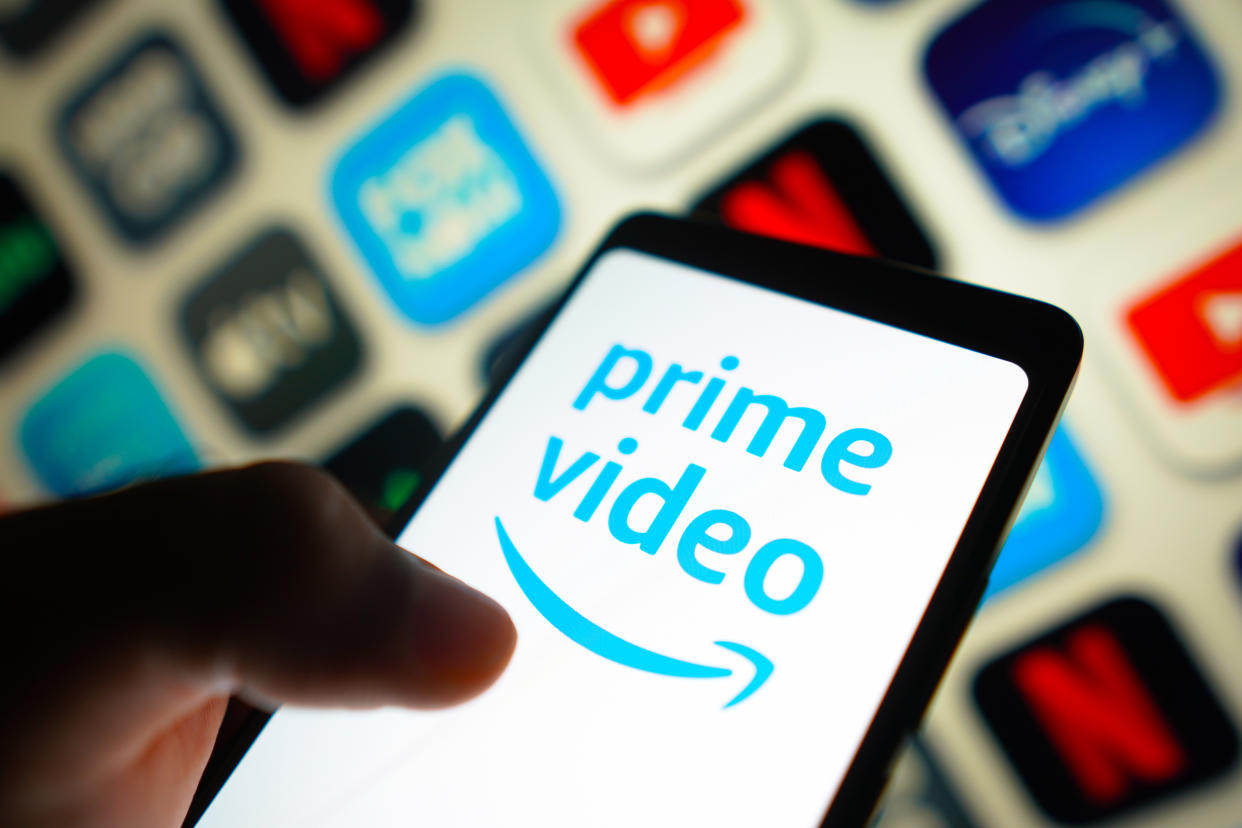Amazon to be 'disruptive force' as it begins ad-tier rollout — here's what's at stake
Amazon (AMZN) is expected to start rolling out ads on its Prime Video streaming service beginning Monday in the US — and Wall Street is bullish on the tech behemoth massively disrupting the shifting media market.
Prime Video subscriptions will now automatically default to the ad-supported tier at current monthly rates of $14.99 for Prime delivery members and $8.99 for non-Prime members, or those who only subscribe to the standalone video service. Subscribers who want the ad-free version will now see their monthly bill go up by $3 a month.
"A 500 lb. gorilla enters the room," MoffettNathanson lead analyst Michael Morton wrote in a note to clients on Friday. "We strongly believe that Amazon’s decision to add advertising to Prime Video will be a disruptive force to commoditized advertising video on demand (AVOD) players, siloed connected TV (CTV) platforms and non-top 20 linear cable networks."
Amazon has roughly 96 million US Prime households, but only a subset of that actively engages with Prime Video, according to MoffettNathanson. The firm estimates Prime Video, which streams shows like "Reacher" and "The Lord of the Rings: The Rings of Power," has an active US subscriber base that's roughly equivalent to Netflix’s 70 million.
As a result of the new rollout, the firm anticipates video ad revenue of $1.3 billion in 2024 and $2.3 billion in 2025. Subscription revenue should also go up by $500 million annually for those who opt to pay extra for the premium tier.
"We forecast Amazon and Disney being neck-and-neck for largest drivers of AVOD ad-revenue," the analysts wrote, predicting the US connected TV and ad-supported market will hit $16 billion by 2025.
Amazon is expected to lead the pack at $4 billion, with Hulu close behind at $3 billion. Peacock (CMCSA) and Roku (ROKU) round out the top four at $2.3 billion and $1.9 billion, respectively.
Following its US debut, the ad tier will roll out globally in the UK and Germany on Feb. 5 before dropping in France, Italy, Spain, Mexico, and Australia later this year. Amazon said it plans to have "meaningfully fewer ads than linear TV and other streaming TV providers."
According to Adweek, ad buyers will pay a cost-per-thousand, or CPM rate, between $30 to $35. That's lower than what they pay to advertise on competitor platforms, which analysts say could lead to downward pressure on pricing.
To compare, Netflix (NFLX) and Disney (DIS) were reportedly seeking a CPM rate between $50 and $60 for their respective ad tiers. Pushback from advertisers eventually convinced them to lower their asking price.

In addition to pricing, Amazon's decision to default users to the ad-supported tier also differs from competitors, although it was considered by one streaming giant.
"We did consider making [ads] the default option," Netflix co-CEO Greg Peters said on Wednesday's earnings call. "But given our long history of not having ads, we thought it was better for our members rather than force them into a change and give them ads."
Peters added he's not concerned when it comes to Amazon entering the ad-supported arena, telling investors there's plenty of ad inventory to go around.
"We talked about over $25 billion in [connected TV] ad spend alone, so there's room for multiple players," he said, noting the streamer will compete by "playing to its strengths" like viewership engagement.
Still, the move is widely expected to massively transform the industry.
"Amazon has one of the broadest audience reaches of all the streaming services," Macquarie analyst Tim Nollen told Yahoo Finance. "They have the reach, they have the consumer data. There will likely be an acceleration toward retail media spending, which could encourage everybody else to do more shop-able advertising."
"It just raises the stakes," the analyst continued. "Everybody now faces another competitor and a very large supply of inventory that they're going to be competing for. It'll drive more demand, or better tools to get better pricing on ads through better targeting or better use of programmatic advertising."
Nollen added Amazon's entrance will also encourage a substantial shift of ad buyers from linear to streaming — yet another blow to legacy media as the cable bundle continues to deteriorate.
"Among media companies, the entire media sector would appear to be at risk with the greatest pain at Paramount (PARA) and AMC Networks (AMCX) given their lack of diversified profitability away from linear networks and limited exposure to live cable network content," MoffettNathanson wrote in its report.
Alexandra Canal is a Senior Reporter at Yahoo Finance. Follow her on Twitter @allie_canal, LinkedIn, and email her at alexandra.canal@yahoofinance.com.
Click here for the latest stock market news and in-depth analysis, including events that move stocks
Read the latest financial and business news from Yahoo Finance
